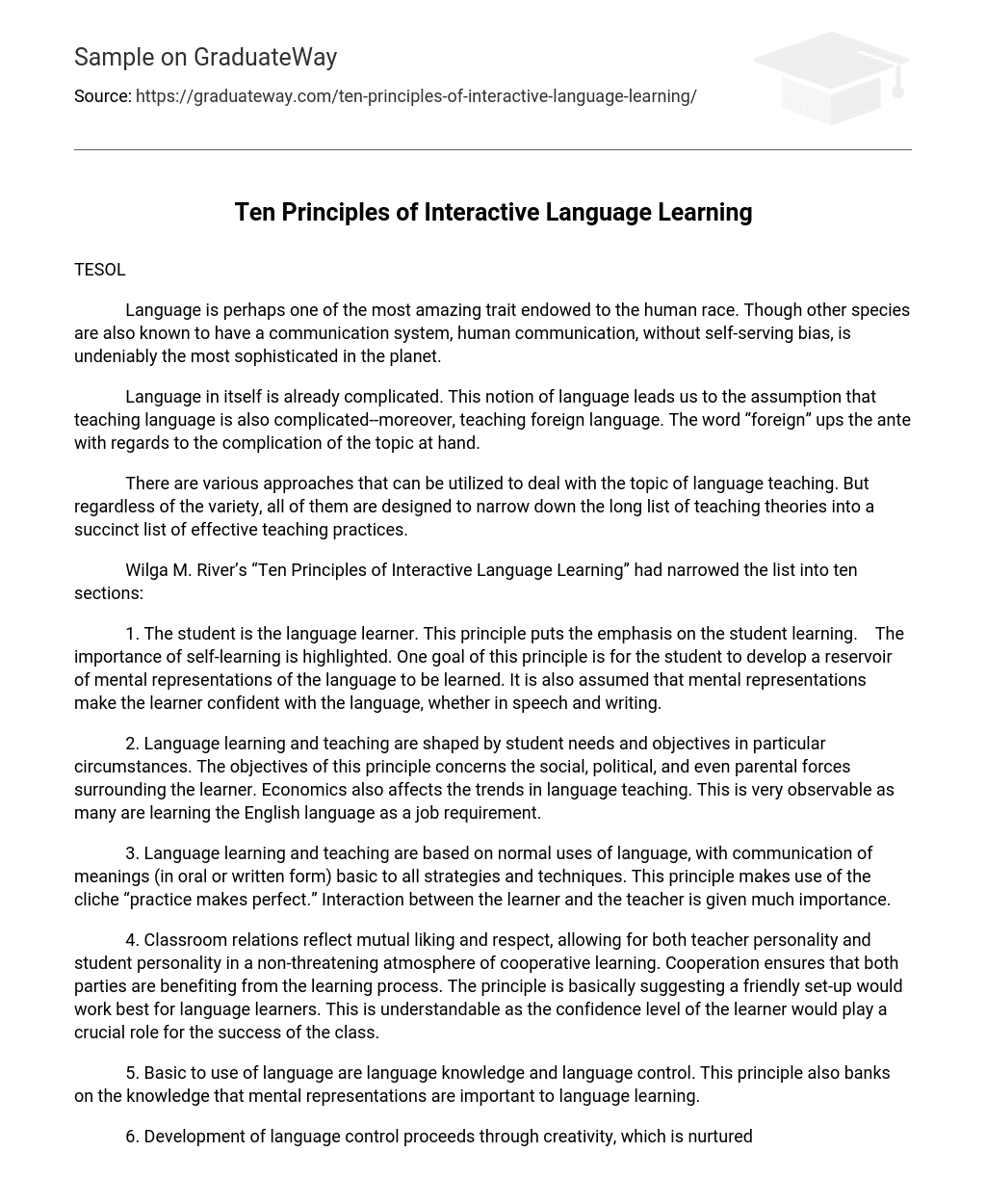TESOL
Language is perhaps one of the most amazing trait endowed to the human race. Though other species are also known to have a communication system, human communication, without self-serving bias, is undeniably the most sophisticated in the planet.
Language in itself is already complicated. This notion of language leads us to the assumption that teaching language is also complicated–moreover, teaching foreign language. The word “foreign” ups the ante with regards to the complication of the topic at hand.
There are various approaches that can be utilized to deal with the topic of language teaching. But regardless of the variety, all of them are designed to narrow down the long list of teaching theories into a succinct list of effective teaching practices.
Wilga M. River’s “Ten Principles of Interactive Language Learning” had narrowed the list into ten sections:
1. The student is the language learner. This principle puts the emphasis on the student learning. The importance of self-learning is highlighted. One goal of this principle is for the student to develop a reservoir of mental representations of the language to be learned. It is also assumed that mental representations make the learner confident with the language, whether in speech and writing.
2. Language learning and teaching are shaped by student needs and objectives in particular circumstances. The objectives of this principle concerns the social, political, and even parental forces surrounding the learner. Economics also affects the trends in language teaching. This is very observable as many are learning the English language as a job requirement.
3. Language learning and teaching are based on normal uses of language, with communication of meanings (in oral or written form) basic to all strategies and techniques. This principle makes use of the cliche “practice makes perfect.” Interaction between the learner and the teacher is given much importance.
4. Classroom relations reflect mutual liking and respect, allowing for both teacher personality and student personality in a non-threatening atmosphere of cooperative learning. Cooperation ensures that both parties are benefiting from the learning process. The principle is basically suggesting a friendly set-up would work best for language learners. This is understandable as the confidence level of the learner would play a crucial role for the success of the class.
5. Basic to use of language are language knowledge and language control. This principle also banks on the knowledge that mental representations are important to language learning.
6. Development of language control proceeds through creativity, which is nurtured by interactive, participatory activities. As observable on these principles, similarities with the integral teaching principles are noticeable. As in this case, the importance of student participation.
7. Every possible medium and modality is used to aid learning. This principle exist to ensure that the learning opportunity are optimized. Learning aids may come in the form of books, visual aids, and other items that may assist in the language learning.
8. Testing is an aid to learning. As in any classroom setting, both learner and teacher should recognize the importance of evaluating the performance. As in this case, the grasp of the foreign language.
9. Language learning is penetrating another culture; students learn to operate harmoniously within it or in contact with it. Cultural aspects and other information (related to the language being taught) are also learned for the learner to have a good grasp of the foreign language.
10. The real world extends beyond the classroom walls; language learning takes place in and out of the classroom. This principle recognizes the limits of classroom learning. Language use is different inside the classrooms because there are controls.
Bibliography
Rivers, W. (2001). The Principles of Language Learning. (Available Online)





